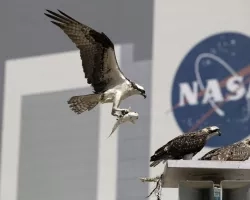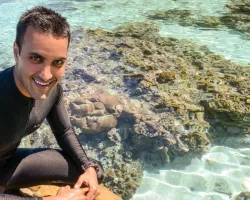Earth’s human population—which now surpasses 7.5 billion—continues to grow, with the scale of our towns and cities following suit. As our communities grow, the habitats of our fellow creatures—animals like tigers, elephants and even squirrels—are shrinking.
Despite protected areas, it is now more difficult for animals around the globe to move between habitats in search of food and mates, escape disease and, increasingly, escape the harsh realities of climate change on their homes.
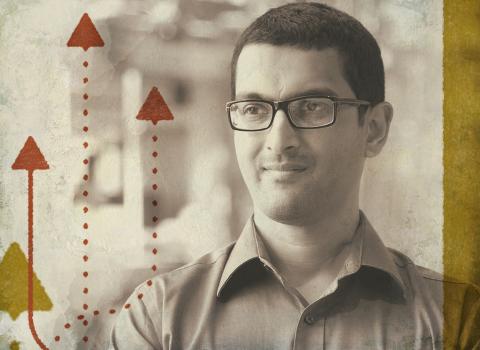
So how can we ensure animals are able to pass between habitats as our urban environments spread?
Through computer science, which is the source of some of the most effective current conservation efforts.
One such tool is Circuitscape, which uses algorithms from electrical circuit theory and NASA satellite imagery to model animal movement across landscapes the way electrical currents move through circuits. The tool is used in NASA Ecoforecasting projects and by conservationists and land managers across the globe.
One of the creators of Circuitscape, Viral Shah, shares his thoughts on computer science-based conservation, why passion matters more than labels, and more.
How did you get into the field of computational conservation?
My childhood was spent in Mumbai, India, in a dense, urban area. It was only when I moved to Santa Barbara to pursue my Ph.D. in computer science from the University of California, Santa Barbara that I really got to experience living close to nature for the first time. The campus is surrounded by the Pacific Ocean and the Santa Ynez mountains.
It was here that I met Brad McRae, who was doing postdoctoral research at the National Center for Ecological Analysis and Synthesis at the time. Brad’s passion for conservation inspired me to build software for ecology. He taught me ecology, and I taught him computer science. Together we collaborated to create Circuitscape in its modern form.
Unfortunately, Brad passed away in 2017 after a battle with cancer, but our time together in Santa Barbara working on Circuitscape—and spending some time surfing—produced some of my most cherished memories.
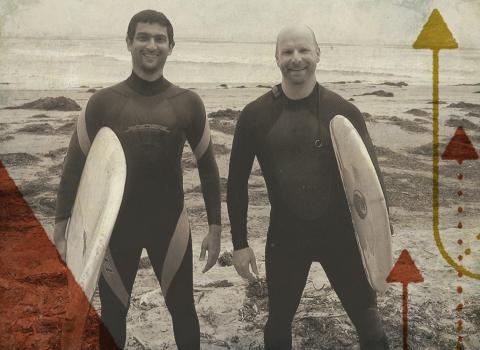
How does Circuitscape work, and what is its biggest conservation success?
The key idea behind Circuitscape comes from Brad’s Ph.D. thesis. Brad observed that the way animals and plants move through fragmented landscapes can be modelled by how an electrical current flows through a circuit. Animals in a landscape take advantage of whatever pathways are available, much like current flows through all paths in a circuit. When animals encounter a barrier, like a road, their movement is reduced in much the same way as lesser current flows through materials of higher resistance.
Circuitscape uses satellite imagery from NASA and other sources to simulate a virtual electrical network of resistors connecting every pixel in the landscape. The modeling of all possible paths an animal can take provides conservationists with a great understanding of the landscape, and how to best preserve it so animals can continue to migrate. Circuitscape is used to inform conservation planning efforts across the globe, and is used widely by conservation-focused groups like The Nature Conservancy, a group Brad worked with for nearly a decade.
My favorite example of Circuitscape at work comes from India, where conservationists used the program to influence the design of corridors that facilitate the movement of tigers, which would otherwise be impeded by the construction of a new national highway.
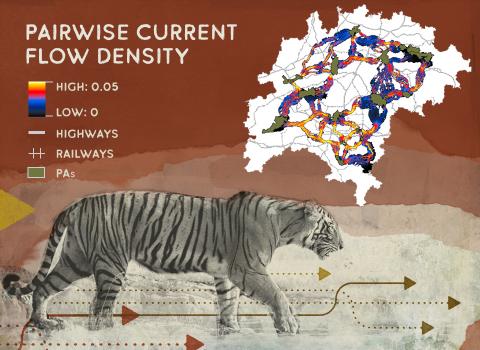
What is the biggest challenge to scientific discovery in your field?
In my field of scientific computing, the biggest challenge has been “the two-language problem.” It was widely believed that programming languages can either be easy to use or high performance, but never both at the same time. As a result, scientists would often prototype their programs in an easy language and then rewrite them in a different language to run fast— something I experienced firsthand in Circuitscape, where my scientific colleagues needed to work with easy programming tools, but users demanded the highest levels of performance.
My colleagues and I have been working since 2009 on Julia 1.0, which was released in 2018 with contributions from more than 700 open-source programmers. Julia 1.0 solves the twolanguage problem and won the prestigious James H. Wilkinson Prize for Numerical Software in 2019 in recognition of that fact.
What advice would you give to young people who want to become scientists?
Labels do not matter.
Frequent concerns you might have—like what school you went to, what it was ranked, what grades you got and how much you will be paid—don’t matter. Focus on your work, on what you care about, on what is really important.
What is your favorite place on Earth and why?
A few years ago, my wife Swapnika and I went camping for a week in the Himalayas, in the Great Himalayan National Park in India. I was blown away by the amount of biodiversity and the scale of the mountains, never having had such an immersive experience in nature before. It left a lasting impact.
